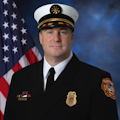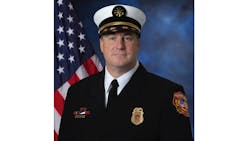Proactive Infection Control: Lessons Learned and the New Normal
A website that tracks epidemics pulses with bright orange dots, which indicate hotspots across the globe. Click virtually any orange dot on epidemictracker.com for more information and you see COVID-19, or 2019 Novel Coronavirus, as the tracked epidemic. However, you also will see others: tick-borne encephalitis in Germany; dengue virus in Paraguay; Ross River virus in Australia; Middle East Respiratory Syndrome (MERS) coronavirus in Saudi Arabia.
Not every epidemic (the spread of an infectious disease in a region within a short period of time) becomes a pandemic, which is when the disease spreads across several countries and affects a large number of people. Thankfully, most won’t, but we all know now that when an epidemic becomes a pandemic the effect globally and locally can be devastating.
One of the biggest lessons learned during 2020 is that surface disinfection alone can’t stop the spread of airborne infectious pathogens. As the pandemic progressed, a growing chorus of experts pointed to inhalation exposure as a major way that COVID-19 spreads. Transmitted though microscopic droplets, known as aerosols, viruses can be likened to smoke. As described by Linsey Marr, who is an airborne disease transmission expert, in “Optimal Conditions for Viral Transmission,” in American Scientist magazine, “When you see someone smoking and you see that plume dispersing, that’s what happens with viruses in the air, too.”
Perhaps even more so than others, firefighters can understand how masks inhibit inhalation of smoke. It’s then easy to translate that concept to inhibiting inhalation of viruses. We also understand masks won’t and can’t be worn by everyone in a variety of scenarios that we face on a daily basis, from caring for unmasked patients in the back of an ambulance to living together at the fire station.
The pandemic has been an eye-opener when it comes to aerosol transmission, but SARS-CoV-2, which is the virus that causes COVID-19, is far from the only virus that’s spread through the air. Aerosols are a key mode of transmission for influenza, yet, even with flu vaccines widely available for decades, we feel the effect of the flu every year. Moreover, other disease-causing pathogens, such as bacteria and mold, are spread through the air.
“Environmental Surface Sampling for MRSA in Washington State Fire Stations” found that firefighters and medics are at a higher risk for carrying MRSA than the average person. Most of us are very aware of MRSA, and, because it usually is spread by direct contact, we are diligent in efforts to eliminate it from surfaces. However, at least one study indicates that MRSA also can be airborne.
In the study, “Significance of Airborne Transmission of Methicillin-Resistant Staphylococcus Aureus in an Otolaryngology-Head and Neck Surgery Unit,”MRSA samples were collected from the air, and about 20 percent of the MRSA particles were within a respirable range of less than 4 microns—in other words, aerosols.
We are well-versed in cleaning surfaces to prevent the spread of disease, but how do we clean the air?
Results of research
Although we also work in healthcare, where sanitizing the air has a long history, it isn’t a subject that has gained much traction in firefighting. In looking into differing technologies to tackle the problem, I was struck by the limitations and problems in common cleaning agents, such as aerosolizing sprayers. Not only do they require precious time for the disinfecting chemicals to dry while the space is unoccupied, which is a problem for both ambulances and firehouses, but when my municipality used the sprays in building common areas, they found that the chemicals took the finish off of furniture.
During the early days of the pandemic, a Chicago-area company that manufactures ultraviolet germicidal irradiation (UVGI, or UV) equipment offered free ambulance sanitizing for first responders. As luck would have it, my station is about an hour from the company’s headquarters. We were transporting at least five COVID-19 patients per day at the time, so we accepted the company’s offer.
I also took the opportunity to learn more about using UVGI for disinfection. I was curious particularly about using it for cleaning the air, something that the company, Aerapy, said its equipment could do.
As explained in “The History of Ultraviolet Germicidal Irradiation for Air Disinfection” by Nicholas G. Reed, “There is a long history of investigations concluding that, if used properly, UVGI can be safe and highly effective in disinfecting the air, thereby preventing transmission of a variety of airborne infections.”
UVGI works by using UV-C light to kill pathogens or render them harmless by disrupting their DNA. The Centers for Disease Control and Prevention (CDC), along with other agencies that are dedicated to workplace safety, recommend the use of UVGI to prevent the spread of certain diseases. Relative to the pandemic, the CDC included in its guidance for reducing exposure to SARS-CoV-2 a recommendation to consider using UVGI as a supplement to help inactivate SARS-CoV-2, particularly if options for increasing room ventilation are limited. The CDC says upper-room UVGI systems can be used to provide air cleaning within occupied spaces, and in-duct UVGI systems can help to enhance air cleaning inside of central ventilation systems.
The American Society of Heating, Refrigerating and Air-Conditioning Engineers (ASHRAE) also recommends UVGI as a strategy of interest to help to prevent the spread of infectious diseases in buildings.
Acting on the Research
Encouraged by my research of UVGI and after reading independent tests and studies of Aerapy’s equipment, my department purchased Aerapy’s upper-room (also known as upper air) UVGI units for station bunkrooms. The bunkrooms were targeted, because personnel spend hours sleeping in these shared spaces without masks and just have the HVAC system to move the air.
Aerapy’s upper air units include built-in fans, which draw the air in and help to move it by the sanitizing UV-C light rays. Natural convection currents naturally move air to the upper portion of rooms (heat rises, of course), but the built-in fans make the process faster and immediately improve air flow in the rooms. Further, the upper-room units don’t create ozone.
Since my department installed the UV equipment, another popular air cleaning technology that I encountered, bipolar ionization, has been the subject of a study that questions its efficacy and that indicates that it can create additional indoor air quality problems.
With the upper-room units installed and the air quality in the station improved, that still left the ambulances. Aerapy had used surface UV equipment to help to sanitize the first responder ambulances, but how could the air be cleaned? No doubt thanks at least in part to my persistent questions, Aerapy invited my station to test a product that it was developing that would address both needs—air and surface cleaning.
The UV device, which now is patented and named DuoGuard, is mounted on the ceiling of the ambulance. It disinfects the air during transport while the vehicle is occupied; a sliding panel stays closed and keeps the UV-C light fully contained while the air cleaning function is engaged. A built-in fan draws air into the device to pass by the disinfecting light. Each trip through the device reduces the number and effect of pathogens in the vehicle. When the vehicle is safely unoccupied, the panel slides back to reveal UV-C lamps that illuminate, to further disinfect exposed surfaces after normal cleaning procedures.
My department’s ambulances were used to test the product, and we are proud to be the first fire department in the country to put the product into use.
Be proactive
Since I began my research into air cleaning solutions, I have been inundated with new products that claim to clean the air. Although I only can speak to my experience, if you are considering improving your disinfecting arsenal, particularly when it comes to the air, my advice is to research, research, research. Look at the technology, look at the products, look for patents, and ask for studies and tests.
One big takeaway for me was looking at the methods and materials versus the final numbers. For example, there are plenty of claims by products of being able to kill 99.9 percent of SARS-CoV-2, but the question is over what span of time? If it takes 30 minutes instead of a few seconds, that’s a big problem. Not unlike putting out a fire, how long that it takes can sometimes mean the difference between life and death.
Additionally, learning that byproducts, such as ozone, that worsen air quality are produced by some air cleaners was a wake-up call.
For those of us who aren’t epidemiologist but who bear a responsibility to help to prevent the spread of disease, we’ve had a crash course in expanding our infection control knowledge. Looking at those pulsing orange dots, will the Lassa virus spread beyond Nigeria? Will Russia contain an outbreak of novel influenza A (H5N8)? Don’t we have enough to worry about without losing sleep over diseases on the other side of the world? That’s certainly what many of us thought before 2020.
Although we can’t control an infected individual boarding a plane and then coughing, sneezing, or just breathing and talking during an international flight, we also can’t be along for the ride anymore. To help to prevent the spread of infectious pathogens, now and in the future, it’s up to us, in our particular environments, to take proactive measures, to look for opportunities, to ask questions and to be part of the solution. When it comes to infection control, that’s our new normal.
About the Author

Darren Brents
Darren Brents is the deputy fire chief for the Mundelein, IL, Fire Department (MFD), which is an ISO Class 2 department. He joined the MFD in 2018 after two decades with the Palatine, IL, Fire Department, where he served as the division chief of training. Brents has worked extensively on developing, training and implementing the “Pit Crew” response to sudden cardiac arrest in the prehospital setting since 1999.
You can contact him at [email protected].
